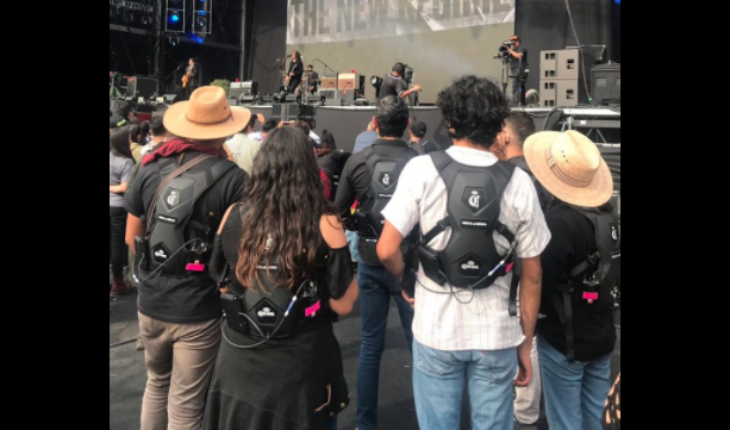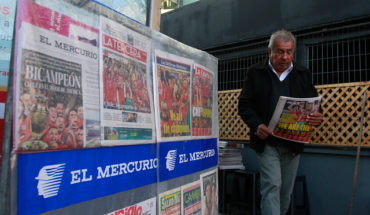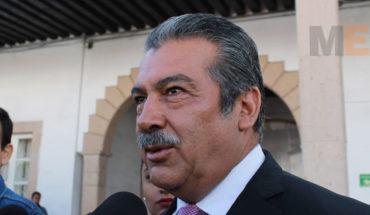in 2018, about 171 thousand people attended Corona Capital in CDMX. All had listened to Imagine Dragons, MGMT or Robbie Williams. They were to enjoy some of their favorite songs, to have fun or to dance in one of the most popular music festivals in Mexico.
But among the public were 60 people who had never before experienced something like this. They were deaf, or hard of hearing (suffering from hearing loss), who first went to a concert and felt that transmits music. All thanks to the combination of desire and technology.
The silence, CDMX Association, wants to break the rules of entertainment in Mexico and bring closer it to the deaf or hard of hearing: that music is inclusive and that no one is left without feeling the emotions of a musical event.
Marilaura, a young publicist for the city of Mexico, founded silent thanks to its relationship with the music: “was born from my desire to keep me linked to music. Its goal is to make inclusive live entertainment”. But there are other more intimate occasion. Twenty years ago they diagnosed with Otosclerosis, a chronic disease similar to osteoporosis, in the ear. It has lost about 80% of his hearing.
“I was scared because I just went to my annual check-up and I lost much hearing that year, in 2016, and I decided I had to do something cathartic but to help me combine my work history with my illness.” Thus, Marilaura used his knowledge of brands, festivals and advertising to create a partnership that included people with partial or total hearing loss.
According to the INEGI in 2016, in Mexico there are approximately 695 thousand deaf. And there is any kind of authorization for them in terms of entertainment live. Marilaura, when I heard even better, used hearing aids to understand the music at a concert. However, these are only designed to amplify the sound of the voice and not the environmental: “for me it was super frustrating to go to a concert that they lowered him the sound of the music and upload me the sound of the voices.” “The music was heard super distorted”. Marilaura gave him equal to see Radiohead or Los Angeles Azules.
how then approach a musical experience to a deaf?
in a concert, Marilaura used to approaching as close as possible to the loudspeakers to feel the vibration of the bass. “It took me the equipment and I was approaching the speakers. And I said ok: vibrations. The vibration of the speakers is easier to make someone feel it. Talking with my partner, Carlos, are looking for a device that will help us to transmit the vibrations”. Silence then found a number of bags of latest technology that vibrate and react to the sound. They use the body as a speaker and transmit rhythm through vibrations.
“Feel the bass frequencies, as they are the more they vibrate. The bass is what it feels like. That is what you feel on the back, in different locations and speeds. For example: reach to distinguish the drums, bass. The voice not, or sharp instruments. But if gives you a good reference of the pace”, account Marilaura.
Silence is the first association that applies this type of technology for live musical events, because, according to Marilaura, backpacks only used to test video games or study music productions.
However, this technology was not sufficient. Carmen Olmos, audiologist and clinical Advisor to silence, he said to Marilaura: “is that you are thinking like hipoacusica, not as deaf. A deaf needs you to give context. And more at Corona Capital, artists singing in English.”
In addition, the backpacks cause a climate of union: “the Pack vibrates towards you and out. When attendees who had no backpack put the hand on the back of someone who did have it. It was something much more collective: the deaf are always together. What you insulate is the society. We do not. “And it was spectacular: all began to dance, especially with Imagine Dragons”.
Our brain it takes between 10 and 15 minutes to get used to a new sensory signal, in this case the vibrations. Then Carmen suggested to Marilaura that hire sign language interpreters. “It is not singing with their hands because it is another language. We apply a technique of whisper: tienes interpreter and someone says behind the letters. That person back translates it to the interpreter of signs. “It is different from what happens at festivals in the us, for example, because it is the same language (English), here we had someone who translated into the Spanish and told the interpreter”, all this so that the deaf were an ideological context on the songs, said Marilaura.
Silence invited the best interpreters of sign for Crown Capital. Marilaura told that they were the interpreters of the Congress of the Union, as well as the INE presidential debate, what reminds you: “as you explain to a deaf mean” Me canso Goose “?” The contextualization works to explain that that is not literal, which is actually “I swear or promise you”. In the case of the music of Crown Capital, as it is in English, it is explain what the singer means. “Ocesa gave us the setlists (list of songs) and already had prepared letters”.
After the success of the partnership in the Corona Capital Festival, silence has ambition for the future: “the plan next year is that all the festivals of Crown have presence of silence. The idea is also to increase the number of backpacks, which are fifty. And just as there is the zone for people with disability, that there is an area for the deaf in any arena of entertainment”, account Marilaura.
Likewise, Marilaura wants to diversify the supply of silence: “not only are exploring with backpacks, but with auxiliary. “Always have to support us sign interpreters: is an issue of civility and understanding community”, concludes.
Thanks for reading! Help us to continue with our work. How? You can now subscribe to political Animal on Facebook. With your monthly donation, you will receive special content. Find out how to subscribe here. Check our list of frequently asked questions here.





